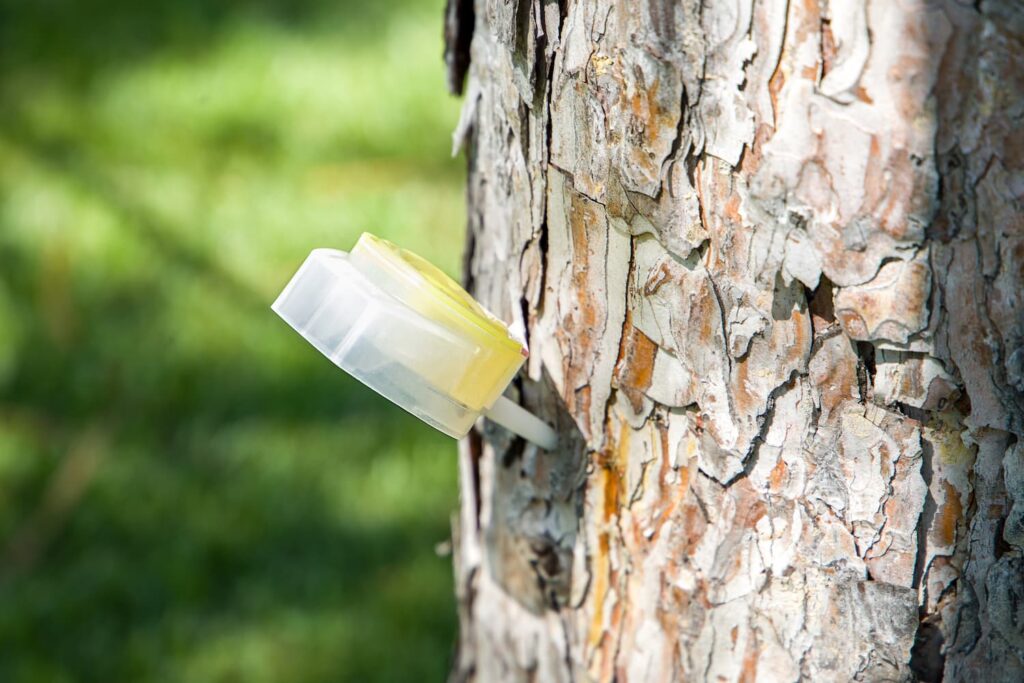Tree diseases can have a serious impact on the health and appearance of trees in Texas. Proper treatment is essential to preserving the beauty and value of your trees, and to preventing the spread of disease to other trees in your landscape.
Texas Tree Diseases
There are many different types of tree diseases that can affect trees in Texas, ranging from fungal infections and pests to environmental stressors and genetic disorders. Some of the most common tree diseases in Texas include:
- Oak Wilt: This fungal disease is spread by beetles and affects oak trees, causing the leaves to wilt and fall off prematurely. It can also cause the tree’s branches to die, and can ultimately kill the tree if left untreated.
- Dutch Elm Disease: This fungal disease is spread by elm bark beetles and affects elm trees, causing the leaves to yellow and wilt, and eventually causing the tree to die.
- Anthracnose: This fungal disease affects a wide range of tree species, including maple, oak, and elm. It causes brown or black spotting on the leaves and can cause the leaves to curl, wilt, and fall off prematurely.
- Cedar Apple Rust: This fungal disease affects apple and cedar trees, causing orange or yellow spots on the leaves and fruit. It can also cause the leaves to wilt and fall off prematurely.
- Scale Insects: These pests attach themselves to the bark of trees and feed on the sap, which can weaken the tree and make it more susceptible to disease.
If you notice any signs of these tree diseases, contact us at (817) 799-7808 to get tree disease treatments from a Certified Arborist on your trees.
Preventing Tree Diseases
There are several steps you can take to prevent tree diseases in your landscape. These include:
- Planting disease-resistant tree varieties: Some tree species are more resistant to certain diseases than others. For example, oak wilt is less common in red oaks than in white oaks.
- Properly maintaining your trees: Proper watering, fertilizing, and pruning can help to keep your trees healthy and less susceptible to disease.
- Controlling pests: Regularly inspecting your trees for signs of pests and taking steps to control them can help to prevent the spread of disease.
- Avoiding injury to your trees: Wounds and injuries to the bark of your trees can make them more vulnerable to disease. Be careful when mowing or using power tools near your trees, and avoid damaging the bark with string trimmers or other equipment.
If you suspect that your tree may be diseased, it’s important to have it evaluated by a certified arborist. An arborist can diagnose the problem and recommend a treatment plan to help save the tree.
Texas Tree Disease Treatment
Treatment options for tree diseases in Texas will depend on the specific disease and the stage at which it is detected. Some common treatments include:
- Fungicides: Fungicides are chemicals that can kill or inhibit the growth of fungal infections. They can be applied to the tree’s leaves, bark, or roots, depending on the location of the infection.
- Pesticides: Pesticides can be used to control pests that spread tree diseases. They can be applied to the tree’s leaves, bark, or roots, depending on the location of the pest.
- Pruning: Pruning can help to remove infected branches or twigs, which can help to prevent the spread of disease to other parts of the tree.
- Fertilization: Fertilization can help to improve the overall health of your trees, making them less susceptible to disease.
- Tree removal: In some cases, it may be necessary to remove a severely diseased tree in order to prevent the spread of disease to other
Regularly Check for Signs of Disease
It is important to regularly inspect your trees for signs of disease and to seek the help of a certified arborist if you suspect that your tree may be sick. A certified arborist can properly diagnose the disease and recommend the appropriate treatment plan to help your tree recover. In addition, proper tree care, including watering, fertilizing, and pruning, can help prevent tree diseases and keep your trees healthy.
In conclusion, tree diseases are a common problem in Texas, but with proper treatment and care, it is possible to maintain the health and vigor of your trees. If you suspect that your tree may be sick, it is important to seek the help of a certified arborist to properly diagnose and treat the disease. By taking steps to prevent and treat tree diseases, you can ensure that your trees will continue to thrive and provide beauty and benefits to your landscape for years to come.

